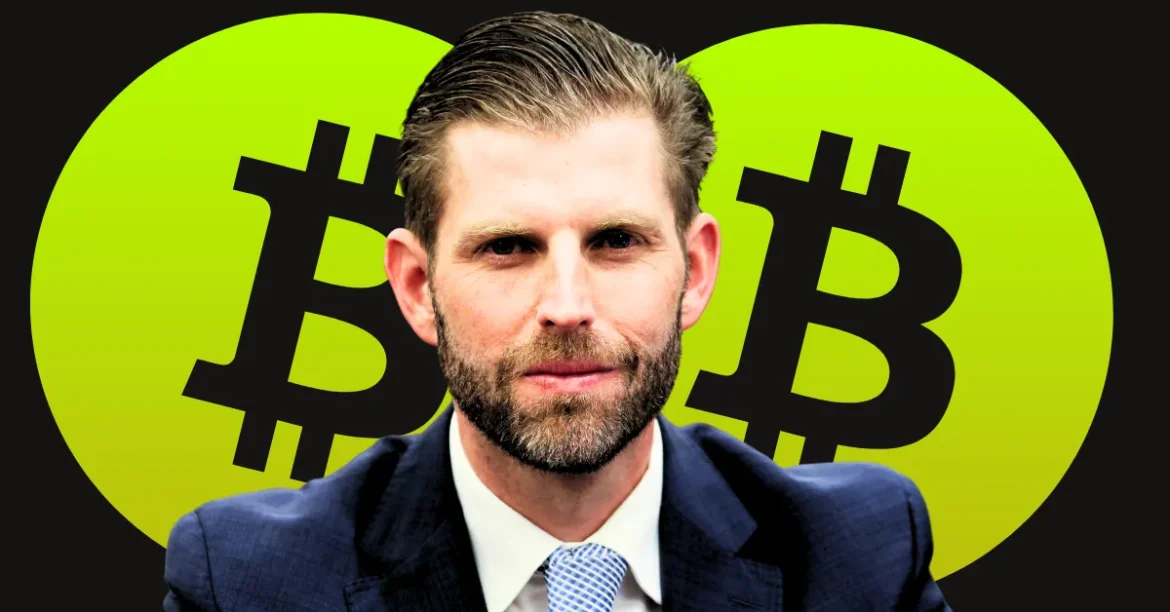The USD1 Stablecoin: A Game-Changer in the Crypto World
The cryptocurrency landscape is constantly evolving, and the latest development has sent shockwaves through the industry. Eric Trump, son of former U.S. President Donald Trump and executive vice president of the Trump Organization, announced that the USD1 stablecoin, launched by World Liberty Financial (WLFI), will power a massive $2 billion investment by MGX into Binance, the world’s largest cryptocurrency exchange. This move not only ties the Trump name to a high-stakes crypto deal but also sets the stage for potential regulatory and market shifts.
The USD1 Stablecoin: A Brief Overview
USD1 is a dollar-denominated stablecoin launched by World Liberty Financial. It is pegged to the U.S. dollar and is backed by short-term U.S. government treasuries, U.S. dollar deposits, and other cash equivalents. The stablecoin is designed to facilitate seamless transactions across decentralized networks, initially launching on the Ethereum and Binance Smart Chain blockchains. This strategic move positions USD1 as a direct competitor to established stablecoins like Tether and USDC, offering a fully backed and secure alternative.
The $2 Billion Investment: A Strategic Partnership
The announcement that USD1 will be used to close MGX’s $2 billion investment in Binance marks a significant milestone. MGX, an Abu Dhabi-based investment firm, will leverage USD1 to settle this substantial investment, underscoring the stablecoin’s potential to disrupt the crypto market. This partnership not only validates USD1’s credibility but also highlights the growing acceptance of stablecoins in high-stakes financial transactions.
Regulatory and Market Implications
The integration of USD1 with Binance and its potential expansion to other blockchains, including TRON, raises several regulatory and market implications. The stablecoin’s backing by U.S. Treasuries and its support from major players like BitGo and Binance Smart Chain could make it a valuable tool for institutions and investors seeking seamless cross-border transactions. However, the Trump family’s involvement in the crypto industry has sparked debates over conflicts of interest and the potential centralization of power within the decentralized ethos of cryptocurrencies.
Potential Impact on the Crypto Market
The launch of USD1 and its integration with Binance could have far-reaching effects on the crypto market. The stablecoin supply on the Binance Smart Chain has already seen a 30% increase due to USD1’s introduction, indicating heightened market interest and potential price movements. Binance Coin (BNB) experienced a 3% price increase following the announcement, suggesting that investors are bullish on the partnership’s potential to drive further growth.
The Road Ahead for USD1 and WLFI
World Liberty Financial’s decision to launch USD1 on multiple blockchains, including Ethereum and Binance Smart Chain, reflects its strategic vision to capitalize on the growing demand for stablecoins. The company’s plans to expand USD1’s availability to other blockchains in the future could further solidify its position in the market. Additionally, WLFI’s recent $550 million WLFI token sale and promises of more disruptive technologies ahead indicate a robust pipeline of innovations.
Conclusion: A New Era in Crypto
The announcement of USD1’s role in the $2 billion Binance deal marks a pivotal moment in the cryptocurrency industry. As the stablecoin gains traction and integrates with major exchanges, it could reshape the landscape of digital assets. However, the Trump family’s involvement also brings regulatory scrutiny and debates over centralization. As the crypto world watches, the success of USD1 will be a testament to the evolving dynamics of decentralized finance and the potential for stablecoins to revolutionize global transactions. The future of USD1 and its impact on the crypto market remains to be seen, but one thing is clear: the stage is set for a new era in digital finance.





